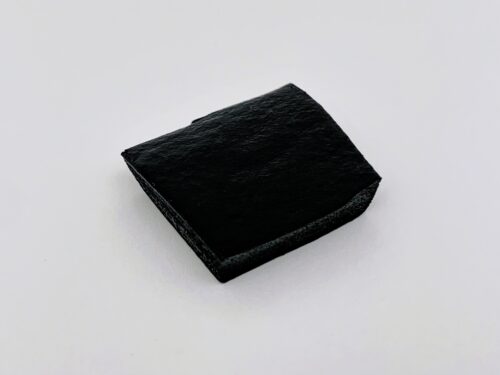
But what is EPDM rubber? Read on to learn more about EPDM, its beneficial properties, and why it’s a good fit for the aerospace market and its challenging conditions.
Key Properties of EPDM Rubber
Some of EPDM’s key characteristics are similar to those of other rubbers. For example, this synthetic rubber resists tear propagation at high temperatures to approximately the same degree as natural rubber (NR), and it also shares low-temperature flexibility with vulcanized NR. Compared to isobutene-isoprene rubber (IIR) vulcanizates, EPDM offers similar resistance to heat deformation.
EPDM’s exact mechanical properties are dependent upon the filler types and volumes with which it’s made. However, the following advantageous qualities are typical of EPDM rubber:
- Durable strength: EPDM is durable and possesses a good strength-to-weight ratio, making it a highly versatile option for aerospace applications and beyond. Hardness, however, varies between 40 and 90 depending on the rubber’s exact composition.
- Performance across a broad temperature range: EPDM seals maintain their integrity in environments ranging from -60° F to 350° F (-51° C to 177° C). They can also withstand cycling temperatures without degrading like other polymer types, as well as hot water and highly pressurized steam.
- Resistance to moisture and chemicals: EPDM rubber material is among the most water-resistant varieties of rubber. Not only does it seal well against moisture, but EPDM is chemically inert. It won’t break down in the presence of chemicals, acids, alkalis, and other corrosive substances as well as non-mineral oil-based brake fluids.
- Resistance to UV radiation, ozone, weathering, and aging: Sunlight can cause seals to break down and fade over time. However, EPDM resists damage from UV light and ozone, making it a safer option for exterior sealing protection. It also offers great longevity; with sufficient care, EPDM seals can last for decades.
- Elasticity and compressibility: EPDM exhibits good elasticity, making it flexible enough for use in dynamic sealing applications. The material also exhibits a low compression set, meaning that post-compression, it will go back to its original shape.
- Electrical properties: Even after exposure to high temperatures or hot air aging, EPDM exhibits good electrical characteristics. It offers superior resistance against high-voltage corona discharges, and it’s an exceptional electrical insulator. This lends it to applications as insulation material for high-voltage cables.
- Manufacturability: Manufacturers can create sealing products with EPDM through multiple techniques, such as compression, transfer, and injection molding.
Benefits of EPDM Rubber Seals for Aerospace Applications

Some of the most common applications for EPDM rubber seals are:
- Sealing gaps between controls and instrumentation in the cockpit
- Maintaining proper pressure within air- and spacecraft cabins
- Preventing fluid leaks within hydraulic systems
- Generating reliable, corrosion-resistant seals in fuel and brake systems
- Adding insulation to solid rocket motors, propulsion systems, and thermal protection systems for spacecraft re-entries
This robust rubber material has optimal resiliency for such applications, with good thermal stability and resistance to moisture and chemicals. It also exhibits low thermal conductivity, helping ensure its performance as an insulator as it won’t experience significant heat transfer from other aerospace components. Ultimately, EPDM’s beneficial properties lend the material to ideal applications as aerospace gaskets and O-rings for reliably sealing against leaks and preventing component damage, equipment failure, and even loss of life.
Custom EPDM Rubber Gaskets and Seals for Aerospace Applications at RD Rubber
Since 1986, RD Rubber Technology Corp. has specialized in high-performance sealing solutions and custom precision molding. We serve critical markets such as aerospace, defense, medical, and pharmaceuticals with our high-quality custom-molded EPDM gaskets and O-rings, among our other product offerings. Our organization is ITAR- and DOD-registered, with ISO 9001 and AS 9100 certifications as part of our commitment to quality management.
Our expert team is here to help, engineering and manufacturing innovative seals from quality thermoset elastomer materials like butyl, nitrile, neoprene, Viton®, synthetic or organic rubber, silicone or liquid silicone rubber, and, of course, EPDM. Contact us today to learn more about RD Rubber’s custom capabilities and EPDM rubber products to support your aerospace projects.
